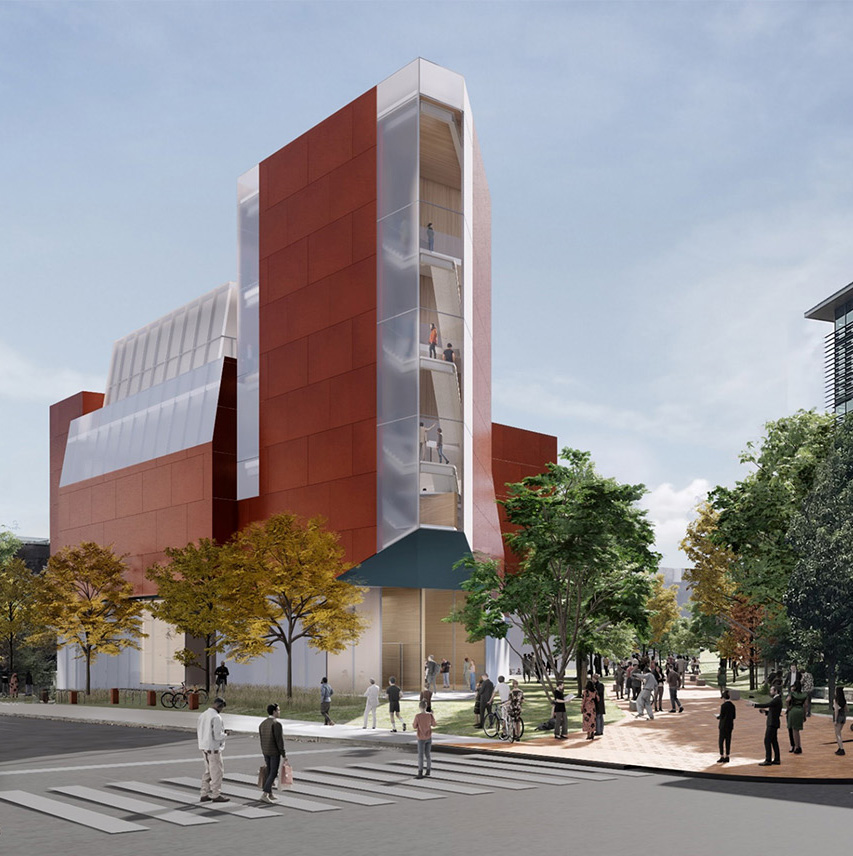The Creative Refine Behind Successful Projects from CDA Architects
The Creative Refine Behind Successful Projects from CDA Architects
Blog Article
A Thorough Summary of Architectural Styles and Their Influence on Modern City Planning and Growth
Architectural styles have actually long served as a mirror to the social values and technological improvements of their time, playing a critical function in forming modern-day city planning and development. From the majesty of Neoclassicism to the utilitarian technique of Brutalism, each design has actually presented special ideas that affect metropolitan aesthetic appeals and functionality.
Historical Summary of Building Styles
Throughout background, architectural styles have actually progressed in feedback to social, technical, and ecological aspects. Each period reflects the prevailing worths, ideas, and advancements of its time, causing an abundant tapestry of style that symbolizes human creative thinking and adjustment. The ancient people, such as the Egyptians and Greeks, established foundational styles that emphasized symmetry and proportion, offering both functional and visual purposes.
As cultures transitioned through the Middle Ages, Gothic design arised, characterized by its verticality and detailed detailing, mirroring the spiritual desires of the era. The Renaissance marked a resurgence of timeless perfects, merging art and style in innovative manner ins which affected succeeding styles across Europe.
The Industrial Transformation presented new materials and building techniques, prompting activities like Innovation, which tested typical types and accepted simplicity and capability. The 20th century saw a diversity of styles, with Postmodernism responding versus the raw minimalism of its precursor, incorporating historic recommendations and eclectic components.
Today, building designs remain to evolve, driven by globalization and sustainability problems, mirroring a vibrant interplay between heritage and development. This historic introduction emphasizes the value of design as a mirror of societal development and as a catalyst for metropolitan advancement.
Trick Architectural Styles Explained
The variety of architectural styles reflects the myriad influences that shape our built setting, each symbolizing distinct features and cultural importances. Secret architectural styles include Timeless, Gothic, Baroque, Modernism, and Postmodernism, each standing for distinct historical contexts and visual philosophies.
Classical style, rooted in ancient Greece and Rome, stresses proportion, percentage, and using columns. On the other hand, Gothic design, growing in the Center Ages, is defined by pointed arches, ribbed vaults, and flying buttresses, developing an ethereal high quality in sanctuaries. Baroque architecture, emerging in the 17th century, is marked by splendour, intricate embellishment, and a vibrant interplay of light and darkness.

Recognizing these styles offers insight into the social stories and technological advancements of their particular periods, highlighting exactly how architecture serves not simply as a sanctuary, yet as a representation of societal values and desires.
Effect on Urban Preparation
In forming the growth of cities, building styles considerably affect city preparation choices. The choice of architectural style frequently determines the aesthetic appeals, functionality, and overall character of urban environments.
Furthermore, building designs can affect zoning laws and land make use of policies. Urban coordinators have to take into consideration the prevailing building trends when developing districts, making sure that new developments balance with existing frameworks. This factor to consider promotes cohesive metropolitan landscapes and boosts neighborhood identification.
The implementation of certain architectural designs can also influence socioeconomic aspects within a city. As an example, premium modern styles may attract affluent residents and businesses, resulting in gentrification, while much more inexpensive real estate remedies could prioritize sensible and lasting designs to suit diverse populations. Inevitably, the interaction between architectural designs and urban planning produces vibrant cities that reflect both historical context and contemporary requirements, shaping the lived experiences of their occupants.
Sustainability and Modern Architecture
Architectural designs play a critical duty in addressing modern challenges, specifically in the realm of sustainability. As urban areas expand and environmental problems magnify, contemporary design significantly welcomes lasting design principles that prioritize power effectiveness, source conservation, and published here marginal environmental effect.
Contemporary building movements, such as biophilic layout and eco-friendly architecture, supporter for structures that integrate with their surroundings, using all-natural products and promoting biodiversity - cda architects. These designs typically incorporate renewable resource resources, such as solar panels and wind turbines, to decrease reliance on nonrenewable fuel sources and lower carbon footprints
Furthermore, the integration of sophisticated modern technologies, such as smart building systems, boosts power monitoring, optimizing resource use while making sure occupant convenience. Cutting-edge water monitoring methods, consisting of rainwater harvesting and greywater recycling, more add to lasting metropolitan atmospheres.
Especially, sustainability prolongs beyond ecological concerns; it includes social and economic dimensions. By cultivating area wellness and advertising inclusivity, modern-day building designs straighten with lasting growth goals. The development of building methods continues to shape resistant cities that not only fulfill the demands of the existing however also safeguard the future for generations to come.
Area Involvement in Design
Community involvement in style functions as a crucial bridge between engineers and the populaces they offer, ensuring that the constructed environment shows the requirements and aspirations of its users. This joint process invites community participants to contribute their understandings and choices, cultivating a sense of ownership and obligation toward the areas they inhabit.
Efficient community interaction uses different methods, such as workshops, studies, and public forums, to collect varied point of views (cda architects). These strategies help with a two-way discussion, permitting engineers to understand regional contexts while equipping residents to articulate their worries and needs. This inclusivity not just enhances the design high quality but likewise advertises social equity by dealing with the special challenges dealt with by marginalized groups

Verdict
Architectural designs have actually greatly influenced contemporary city planning and advancement, showing developing social and technological contexts. The assimilation of historic appearances with modern requirements promotes city environments that prioritize sustainability and neighborhood check my site engagement. As cities remain to expand and adjust, the continuous discussion between building heritage and contemporary layout principles will certainly remain necessary in creating inclusive, dynamic areas that boost top quality of life original site and advertise social equity. The future of city development depend upon this unified balance.
Report this page